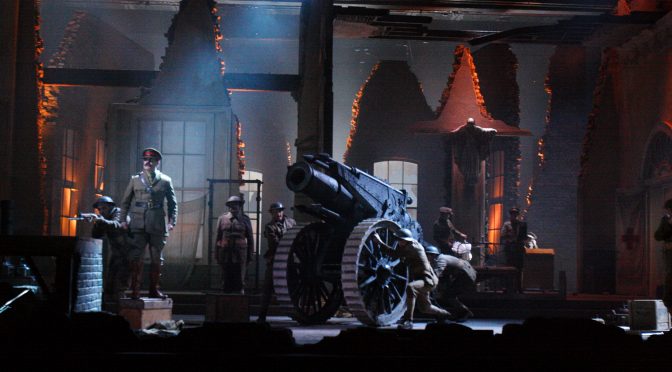While The Merchant of Venice quote, handily emblazoned on tote bags in the Globe’s shop, tells us “all that glisters is not gold”, the theatre’s new production of Richard II is a solid 24-carat affair. Shakespeare’s deposed king is often presented as a star vehicle, but director Simon Godwin provides a carefully crafted ensemble piece that gives every character their due and is all the better for doing so.
Which is not to say that Charles Edwards isn’t magnificent in the title role. Against the golden backdrop of Paul Wills’ set and accompanied by Stephen Warbeck’s impressive score for trombones, Edwards strikes a suave figure. But it doesn’t take long to see a delusional aspect to this infantile King, set up by a prologue scene of his childhood coronation. In an admirably understated performance, especially during his imprisonment, Edwards shows this hollow crown is unhinged and tarnished by religious fervour.
The impact Richard’s divine right to rule has on society is highlighted by the luckless Aumerle, a role that Graham Butler gets a great deal from. One of Richard’s “caterpillar” sycophants, then betrayers, like his ruler, he seems strangely juvenile. One reservation: in this serious show, Godwin introduces humour into the scene of Aumerle’s treachery. While the text suggests jokes and the piece allows William Chubb and Sarah Woodward to shine as the Yorks, surely going all out for laughs is a misfire.
Much better are the muddled motivations of Richard’s courtiers. Godwin creates a sense of unprecedented events unfolding – with Chubb, again excellent, as a conflicted Regent and a superbly sinister Northumberland played by Jonny Glynn. Even the gardening scene, which I always think should be pruned, is handled well, using the audience in the complicit manner that directors at the Globe can seldom resist.
Godwin’s usurping Bolingbroke is a relatively complex figure, suggesting that events might have overtaken a once loyal subject. David Sturzaker gives a sterling performance in this strangely opaque role; a virile presence, we see the politician but also an emotional intensity that adds a layer to a play so much about surface presentation. Underlying the production’s traditional feel and gorgeous look is a satisfyingly intelligent assessment of the play’s themes.
Until 18 October 2015
Photo by Johan Persson




